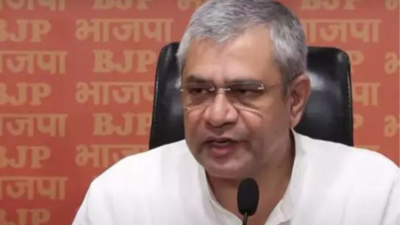The sweeping changes in Goods and Services Tax (GST) rates announced by the government will come into effect from September 22, the first day of Navratri, Union minister Ashwini Vaishnaw said on Saturday, calling it a transformative step for the economy.Speaking at a press conference at the BJP headquarters, Vaishnaw said the rationalisation of rates and simplification of the tax system would ease citizens’ lives and provide an economic push. “Before 2014, the taxation system was very complex and goods were taxed at multiple levels. GST has made it simple. This rationalisation and simplification in GST reforms will make people’s lives easier,” he said, ANI quoted him as saying.The minister argued that the measures, alongside income tax relief announced in the 2025-26 Budget, would help lift India’s GDP through higher consumption. “This GST reform will push further India’s economy. From pure economics point of view, our GDP is currently at Rs 3.30 lakh crore, of which Rs 2.02 lakh crore is our consumption. Even if our consumption rises by 10%, we will have Rs 20 lakh crore extra consumption, contributing to GDP,” he gave a back of the envelope calculation as to what to extent can this GST reform boost the country’s consumption.The GST Council, chaired by Finance Minister Nirmala Sitharaman, has slashed rates across multiple sectors in what the government described as a Diwali gift. Items of daily use such as hair oil, shampoo, toothpaste, soaps, toothbrushes and shaving cream will now attract 5% GST, down from 18%.Similarly, dairy products like butter, ghee, cheese and packaged snacks such as namkeens, bhujiya and mixtures will see their rates reduced from 12% to 5%. Utensils, feeding bottles, baby napkins and clinical diapers will also now fall under the 5% slab.Farmers are set to benefit with tractor tyres and parts moving from 18% to 5%, and tractors themselves from 12% to 5%. The healthcare sector, too, has received significant relief, with individual health and life insurance policies now fully exempt from GST. Medical products including thermometers, oxygen, diagnostic kits, reagents, glucometers and test strips will be taxed at 5% instead of 12%, while corrective spectacles also fall under the 5% slab.Education items such as maps, charts, globes, pencils, sharpeners, crayons and pastels are now fully exempt, with notebooks, exercise books and erasers also shifted to the nil slab.The automobile sector, a major contributor to GDP, will also see relief. Petrol, hybrid, LPG and CNG cars up to 1200 cc and 4000 mm length, along with diesel and hybrid cars up to 1500 cc, will be taxed at 18% instead of 28%. Three-wheelers, motorcycles up to 350 cc and goods transport vehicles will also benefit.High-ticket appliances, including air conditioners, televisions above 32 inches, monitors, projectors and dishwashers, have also been brought down to 18% from 28%.Alongside rate cuts, procedural reforms were also announced. New GST applicants will now get automatic registration within three working days through system-driven analysis.“These reforms fulfil the promise made by PM Modi from the ramparts of the Red Fort,” Vaishnaw said, adding that the changes will strengthen the consumption cycle and push India’s growth momentum further.










